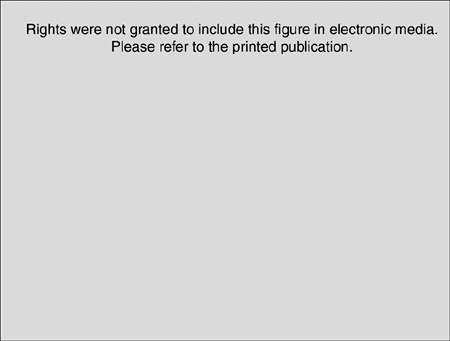http://evolve.elsevier.com/Edmunds/NP/
Nonprescription medications or over-the-counter (OTC) medications are defined as drugs that are considered to be safe and effective without professional supervision, provided the required label directions and warnings are followed.
In general, consumers today are more educated about health treatment recommendations and are more likely to pursue OTC medications than ever before. Over-the-counter medications were a booming business in the United States in 2011, with Americans spending more than $17.8 billion on nonprescription remedies. Since 1976, 80 ingredients, dosages, or indications have been considered safe enough to be “switched” from prescription to OTC status (Consumer Health Care Products Association, 2007). Over-the-counter medicines are real drugs for real problems, and they augment prescriptions to improve well-being or treat maladies and illnesses.
Extent of OTC Medication Use
The OTC business in the United States is so large that it has been reported that people would rather choose a new car than be faced with the task of determining which OTC they should buy for a particular ailment (Consumer Health Care Products Association, 2007). The role of OTCs in today’s health care market is growing because of the high number of uninsured who seek to treat themselves, more educated consumers, and an active self-care movement.
The Nonprescription Drug Manufacturers Association (NDMA) estimates that more than 100,000 products now are available on an OTC basis; 200 of these once were available only by prescription. These products contain one or more of about 700 active ingredients and are available in a variety of dosage forms, sizes, and strengths. OTC sales total more than $20 billion a year. The top-selling categories of OTCs include cough/cold remedies and headache remedies. It has been estimated that 77% of Americans take OTC medicines to treat common everyday ailments, with adults 65 years and older consuming 33% of all OTC medicines sold in the United States. In fact, 6 of the top 10 most frequently used drugs, including the top 4, were drugs available OTC (Consumer Health Care Products Association, 2010).
In recent research on medications in nursing homes (Simoni-Wastila et al, 2006), study subjects were found to be high users of both prescription (Rx) (98%) and OTC (94%) medications. The average resident was administered 8.8 unique medications per month (5.9 Rx and 2.9 OTC medications). This study reported that 12 therapeutic classes accounted for 93.9% of OTC medications used by residents, but Rx use was also high in some of these same classes—for example:
Prescription plans available to seniors do not usually cover OTC medications. OTCs represent an important component of the therapeutic regimen of nursing home residents, but even with people on fixed incomes, utilization rates are insensitive to drug coverage.
OTC products differ from prescription medications in the following ways (APC, 2007):
The most common categories of OTCs parallel the products available by prescription, essentially providing to the public access to medications without a health care provider’s intervention. These include laxatives, acid-peptic disorder products (e.g., antacids, H2-receptor antagonists), analgesics, cough/cold products (e.g., antihistamines, decongestants, expectorants, antitussives), vaginal antifungals, smoking cessation products, and topical steroids.
OTCs are sold at many sites; probably less than half of all OTC medications are sold in pharmacies. Because so many different names and reformulations of products are available, it is important for the provider to learn the drug name, not the product name. In addition, many of these products have multiple ingredients. The cost of buying multiple-ingredient products can be greater than the cost of buying ingredients singly, so it is important to check out commonly used products for price.
Surveys show that women are most likely to purchase OTC products; they also are more likely than men to read labels on medicines before taking them (APC, 2007). The FDA requires that OTC medication labels should present all important information in a manner that a typical consumer can read and understand. A standardized labeling format is used for all OTC medications marketed in the United States. Key information includes the active ingredients, followed by purpose(s), uses, warnings, and directions; these items are placed in the same order on all OTC packages in a readable format. The new label is based on FDA research that concluded that many consumers could not read the small print on labels, could not understand some of the complex words, and could not discern what information was most important to them because no standardized format was used.
One of the most important tasks involved in reading labels for OTC medications is to determine the presence of additional ingredients in a product that might pose risk to some patients. These hidden ingredients are included for different purposes and may be seen in the form of preservatives, color additives, delivery, or stabilizing products. If individuals have an allergy or intolerance to even small doses of these products, they may not be aware of the risks unless they read the label. Current research suggests that most patients admit they do not read the whole label and are often unaware of what adverse effects might be associated with products. Table 7-1 lists common ingredients present in a number of common OTC medications.
Stay updated, free articles. Join our Telegram channel

Full access? Get Clinical Tree



